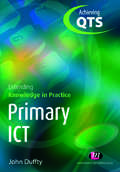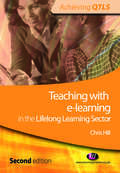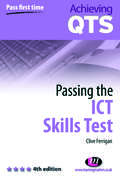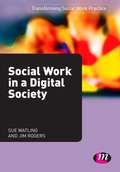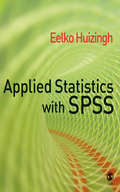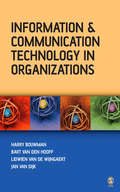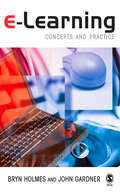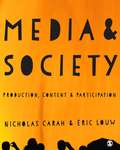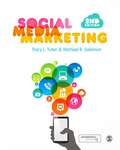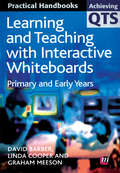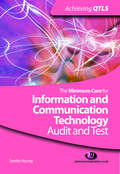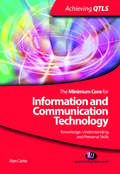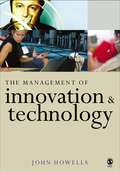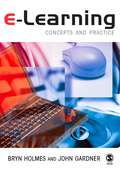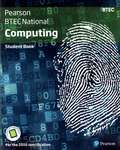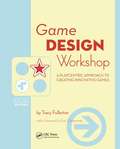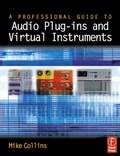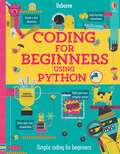- Table View
- List View
Achieving QTS Extending Knowledge in Practice
by John DufftyStill the biggest concern for many on initial teacher training courses is the acquisition of subject knowledge and the ability to translate that into effective teaching. This book addresses this - building on the core subject knowledge covered in the Achieving QTS series and relating it to classroom practice. It supports trainees in extending and deepening their knowledge of ICT and demonstrating how to apply it to planning and implementing lessons. Practical and up-to-date teaching examples are used to clearly contextualize subject knowledge. A clear focus on classroom practice helps trainees to build confidence and develop their own teaching strategies.
Teaching with e-learning in the Lifelong Learning Sector
by Chris HillThis new edition (previously entitled "Teaching Using Information and Learning Technology in Further Education") is an up to date resource for trainee and qualified teachers within the Lifelong Learning Sector. Focusing on information and learning technology as a toolkit for resourceful teachers, it includes reflective activities, teaching strategies and teaching tips throughout, along with ideas for applying these to the reader's own context. In this new edition, all material has been fully updated to reflect the latest changes in technology and its applications, and each chapter in the book is referenced to the new LLUK Standards.
Passing the ICT Skills Test
by Clive FerriganAll trainee teachers hoping to gain Qualified Teacher Status (QTS) need to pass a computerised ICT skills test. The test is designed to ensure all those qualifying as teachers have a sound grasp of fundamental ICT skills such as databases, word processing and the Internet and can apply these in their work both in and out of the classroom. This text outlines the test requirements and explains the basic subject knowledge essential to completing the test. The fourth edition is fully updated to comply with the latest TDA standards and includes new self-assessment questions.
Social Work in a Digital Society
by Sue Watling Jim RogersThis book will help students develop their understanding of how the internet is impacting on social work education and practice in 21st century. Essential reading for students interested in the influence of digital technology and social media, including the impact of digital divides, this book looks at how the value-base of social work can have a positive effect on service users and carers who engage with digital services.
Applied Statistics with SPSS
by Eelko HuizinghAccessibly written and easy to use, Applied Statistics Using SPSS is an all-in-one self-study guide to SPSS and do-it-yourself guide to statistics. Based around the needs of undergraduate students embarking on their own research project, the text's self-help style is designed to boost the skills and confidence of those that will need to use SPSS in the course of doing their research project. The book is pedagogically well developed and contains many screen dumps and exercises, glossary terms and worked examples. Divided into two parts, Applied Statistics Using SPSS covers : 1. A self-study guide for learning how to use SPSS. 2. A reference guide for selecting the appropriate statistical technique and a stepwise do-it-yourself guide for analysing data and interpreting the results. 3. Readers of the book can download the SPSS data file that is used for most of the examples throughout the book here. Geared explicitly for undergraduate needs, this is an easy to follow SPSS book that should provide a step-by-step guide to research design and data analysis using SPSS.
Information and Communication Technology in Organizations
by Harry Bouwman Bart van den Hooff Lidwien Van De Wijngaert Jan Van DijkHow best can we understand why the application of information and communication technology in organizations succeeds or fails? Calling on technical, organisational, social, psychological and economic perspectives, this book provides a fresh and comprehensive framework for answering this question. Consideration is given to how ICT is adopted, implemented and used within organizations. Throughout special features will help readers clarify their understanding. These features include: - Case studies and vignettes that chart the opportunities and pitfalls created by ICT - Useful chapter introductions - An up to date glossary of concepts and abbreviations
E-Learning: Concepts and Practice
by Bryn Holmes John Gardnere-Learning is now an essential component of education. Globalization, the proliferation of information available on the Internet and the importance of knowledge-based economies have added a whole new dimension to teaching and learning. As more tutors, students and trainees, and institutions adopt online learning there is a need for resources that will examine and inform this field. Using examples from around the world, the authors of e-Learning: Concepts and Practices provide an in-depth examination of past, present and future e-learning approaches, and explore the implications of applying e-learning in practice. Topics include: - educational evolution - enriching the learning experience - learner empowerment - design concepts and considerations - creation of e-communities - communal constructivism This book is essential reading for anyone involved in technology enhanced learning systems, whether an expert or coming new to the area. It will be of particular relevance to those involved in teaching or studying for information technology in education degrees, in training through e-learning courses and with developing e-learning resources. Bryn Holmes is an assistant professor in Education at Concordia University, Montreal and director of an Internet company, Inishnet, which offers research and consultancy in online education. John Gardner is a professor of education at Queen's University, Belfast and his main research areas include policy and practice in information and communications technology in education.
Media and Society: Production, Content and Participation
by Eric Louw Nicholas Carah'This is the media and society text that critical scholars have been waiting for'. - Professor Mark Andrejevic, Pomona College This book unpacks the role of the media in social, cultural and political contexts and encourages you to reflect on the power relationships that are formed as a result. Structured around the three cornerstones of media studies; production, content and participation, this is an ideal introduction to your studies in media, culture and society. The book: Evaluates recent developments in media production, industries and platforms brought about the emergence of interactive media technologies. Examines the shifting relationship between media production and consumption instigated by the rise of social and mobile media, recasting consumption as ‘participation’. Explores the construction of texts and meanings via media representations, consumer culture and popular culture, as well as the relationship between politics and public relations. Assesses the debates around the creative and cultural labour involved in meaning-making. Includes a companion website featuring exercise and discussion questions, links to relevant blogs and web material, lists of further reading and free access to key journal articles.
Social Media Marketing (2nd edition)
by Dr Tracy L. Tuten Professor Michael R. SolomonSocial Media Marketing was the first textbook to cover this vital subject. It shows how social media fits into and complements the marketer’s toolbox. The book melds essential theory with practical application as it covers core skills such as strategic planning for social media applications, incorporating these platforms into the brand’s marketing communications executions, and harnessing social media data to yield customer insights. The authors outline the ‘Four Zones’ of social media that marketers can use to achieve their strategic objectives. These include: 1. Community (e.g. Instagram) 2. Publishing (e.g. Tumblr) 3. Entertainment (e.g. Candy Crush Saga) 4. Commerce (e.g. Groupon) This second edition contains new examples, industry developments and academic research to help students remain current in their marketing studies, as well as a new and improved user-friendly layout to make the text easy to navigate. Related ISBN: 9781473916494 (EPUB).
Learning and Teaching with Interactive Whiteboards: Primary and Early Years
by David Barber Linda Cooper Mr Graham MeesonInteractive Whiteboards (IWBs) are becoming increasingly common in schools and early years settings, and it is important for trainees to be equipped with the necessary skills and understanding to use them effectively to enhance learning. This book takes a thematic approach, examining all the key issues required to get the most out of this versatile learning technology. All chapters contain case studies from a range of subject areas and across the key stages, ensuring the text is rooted in the reality of the primary classroom and its curriculum.
The Minimum Core for Information and Communication Technology: Audit and Test
by Sandra MurrayThis book supports trainee teachers in the Lifelong Learning Sector in the assessment of their knowledge of ICT. A self-audit section is included to help trainees understand their level of competence and confidence and will help them identify any gaps in their knowledge and skills. This is followed by exercises and activities to support and enhance learning. The book covers all the content of the LLUK standards for the minimum core for information and communication technology. Coverage and assessment of the core have to be embedded in all Certificate and Diploma courses leading to QTLS and ATLS status.
The Minimum Core for Information and Communication Technology: Knowledge, Understanding and Personal Skills
by Alan ClarkeThe teacher training framework, introduced in September 2007, requires all teachers in the post-16 sector to possess knowledge, understanding and personal skills to at least level 2 in the minimum core for ICT. Coverage and assessment of the minimum core have to be embedded in all Certificate and Diploma courses leading to QTLS and ATLS status. This book is a practical guide to ICT for trainee teachers in the Lifelong Learning Sector. It enables trainee teachers to identify and develop their own ICT skills and to support their students in ICT.
The Management of Innovation and Technology: The Shaping of Technology and Institutions of the Market Economy
by Dr John Howells`The book provides a valuable resource for researchers, practitioners and policy-makers... In particular, it provides a good introduction to broader aspects of the field of innovation for researchers based within the engineering and science traditions' - Journal of Manufacturing Technology Management `Howells has synthesised a broad range of sources with considerable insight to provide the first sophisticated single volume on innovation that draws on economics, sociology, law and from the history of science and technology. By setting innovation in social and institutional context, he convincingly shows how firms and markets shape and can be shaped by the decisions of managers and entrepreneurs. I will certainly be using this book as a central text for my Masters degree teaching on innovation management, management of technology and related topics' - Jonathan Liebenau, London School of Economics and Columbia University `A great strength of the book is the extensive and detailed integration of rich case study analyses into the main flow of the argument. Many apparently well known cases are revisited and critically assessed to draw clear and often contrary to popular belief lessons. This is a highly original and commendable feature of this text. It provides an unusually strong integration between theory and examples. And there is no doubt of the relevance of the examples: they are not inserted as an afterthought, but are intrinsically part of the development of the thinking' - Professor James Fleck, Head of Entrepreneurship and Innovation Group, University of Edinburgh Management School This book analyses a range of social contexts in which human decisions shape technology in the market economy. It comprises a critical review of both a select research literature and in-depth historical studies. Material is drawn from many social science disciplines to inform the reader of the reality of taking decisions on innovation. The chapters cover: - The social context for individual acts of creative insight - The development of the technology-market relationship - The management of R&D and technological standards - Technological competition - The role of institutions of finance in innovation - The reciprocal relationship between intellectual property law and technological innovation. - The role of technological skills and regimes of technological education in innovation. - An introduction to the role of the state in maintaining the innovative capacity of the private sector.
E-Learning: Concepts and Practice (PDF)
by John Gardner Bryn Holmese-Learning is now an essential component of education. Globalization, the proliferation of information available on the Internet and the importance of knowledge-based economies have added a whole new dimension to teaching and learning. As more tutors, students and trainees, and institutions adopt online learning there is a need for resources that will examine and inform this field. Using examples from around the world, the authors of e-Learning: Concepts and Practices provide an in-depth examination of past, present and future e-learning approaches, and explore the implications of applying e-learning in practice. Topics include: - educational evolution - enriching the learning experience - learner empowerment - design concepts and considerations - creation of e-communities - communal constructivism This book is essential reading for anyone involved in technology enhanced learning systems, whether an expert or coming new to the area. It will be of particular relevance to those involved in teaching or studying for information technology in education degrees, in training through e-learning courses and with developing e-learning resources. Bryn Holmes is an assistant professor in Education at Concordia University, Montreal and director of an Internet company, Inishnet, which offers research and consultancy in online education. John Gardner is a professor of education at Queen's University, Belfast and his main research areas include policy and practice in information and communications technology in education.
Btec National Computing Student Book (PDF)
by Jenny Phillips Alan Jarvis Richard Mcgill Mark Fishpool Tim Cook David Atkinson-BeaumontThe Student Book and ActiveBook has clearly laid out pages with a range of supportive features to aid learning and teaching: Getting to know your unit sections ensure learners understand the grading criteria and unit requirements. Getting ready for Assessment sections focus on preparation for external assessment with guidance for learners on what to expect. Hints and tips will help them prepare for assessment and sample answers are provided for a range of question types including, short and long answer questions, all with a supporting commentary. Learners can also prepare for internal assessment using this feature. A case study of a learner completing the internal assessment for that unit covering 'How I got started', 'How I brought it all together' and 'What I got from the experience'. Pause Point features provide opportunities for learners to self-evaluate their learning at regular intervals. Each Pause Point point feature gives learners a Hint or Extend option to either revisit and reinforce the topic or encourage independent research or further study skills. Case Study and Theory into Practice features enable development of problem-solving skills and place the theory into real life situations learners could encounter. Assessment Activity/Practice features provide scaffolded assessment practice activities that help prepare learners for formative assessment. Within each assessment practice activity, a Plan, Do and Review section encourages supports learners' formative assessment by to making sure they fully understand what they are being asked to do, what their goals are and how to evaluate the task and consider how they could improve. Dedicated Think Future pages provide case studies from the industry, with a focus on aspects of skills development that can be put into practice in a real work environment and further study.
Game Design Workshop: A Playcentric Approach to Creating Innovative Games (PDF)
by Tracy Fullerton Christopher Swain Steven S. HoffmanMaster the craft of game design so you can create that elusive combination of challenge, competition, and interaction that players seek. This design workshop begins with an examination of the fundamental elements of game design; then puts you to work in prototyping, playtesting and redesigning your own games with exercises that teach essential design skills. Workshop exercises require no background in programming or artwork, releasing you from the intricacies of electronic game production, so you can develop a working understanding of the essentials of game design. 9780080560397 9781281151162
Social Media Marketing (2nd edition) (PDF)
by Dr Tracy L. Tuten Professor Michael R. SolomonSocial Media Marketing was the first textbook to cover this vital subject. It shows how social media fits into and complements the marketer’s toolbox. The book melds essential theory with practical application as it covers core skills such as strategic planning for social media applications, incorporating these platforms into the brand’s marketing communications executions, and harnessing social media data to yield customer insights. The authors outline the ‘Four Zones’ of social media that marketers can use to achieve their strategic objectives. These include: 1. Community (e.g. Instagram) 2. Publishing (e.g. Tumblr) 3. Entertainment (e.g. Candy Crush Saga) 4. Commerce (e.g. Groupon) This second edition contains new examples, industry developments and academic research to help students remain current in their marketing studies, as well as a new and improved user-friendly layout to make the text easy to navigate. Related ISBN: 9781473916494 (EPUB), 9781473916517 (PDF).
A Professional Guide to Audio Plug-ins and Virtual Instruments
by Mike CollinsIf you are an audio professional needing a complete reference to the complex world of plug-ins and virtual instruments, look no further. Mike Collins, author of Pro Tools for Music Production, has meticulously surveyed the scene, showing what's available and how they integrate into the various host platforms. The book explains the differences between TDM, RTS, MAS and VST plug-ins, how they can be used with different MIDI + Audio programs and shows the range of options available. It also explains virtual instruments and how these can be used as either plug-ins or stand alone products. A must for every recording studio. The book combines explanations, overviews and key concepts with practical considerations and hands-on examples. The reader will gain a broad understanding of the options available, how they work and the possibilities for integration with systems as well as the end result. The book also includes a section on how to write your own plug-ins and a suggested standard plug-ins portfolio for those wanting to get started quickly.
A Professional Guide to Audio Plug-ins and Virtual Instruments (PDF)
by Mike CollinsIf you are an audio professional needing a complete reference to the complex world of plug-ins and virtual instruments, look no further. Mike Collins, author of Pro Tools for Music Production, has meticulously surveyed the scene, showing what's available and how they integrate into the various host platforms. The book explains the differences between TDM, RTS, MAS and VST plug-ins, how they can be used with different MIDI + Audio programs and shows the range of options available. It also explains virtual instruments and how these can be used as either plug-ins or stand alone products. A must for every recording studio. The book combines explanations, overviews and key concepts with practical considerations and hands-on examples. The reader will gain a broad understanding of the options available, how they work and the possibilities for integration with systems as well as the end result. The book also includes a section on how to write your own plug-ins and a suggested standard plug-ins portfolio for those wanting to get started quickly.
Coding for Beginners: Using Python
by Louie StowellA beginner’s guide to coding using Python, one of the most popular computer languages. Step-by-step instructions show how to get started and write a simple program. New commands are introduced with examples and colourful pictures so by the end of the book, readers can code games, drawings and more. Includes extra help and downloads online. 9781409599340
Base Register Addressing (tactile)
by RnibThis is a diagram showing base register addressing. There are two textured boxes on the right, the top labelled operand and the bottom labelled bass register. These are connected with to a circle in the centre of the page with a "+" label within. This circle is connected to a large textured box on the right labelled memory, this box is split into multiple sections, one of them labelled data.
Binary Tree (tactile)
by RnibThis diagram shows a binary tree with labels on the different components.
Carrier Sense Multiple Access (tactile)
by RnibThis diagram shows a carrier sense multiple access network.
Central Processing Unit (CPU) (large print)
by RnibThis flowchart diagram shows the features of a computer central processing unit with input, output and backing store. The CPU, shown by a textured rectangle, is in the centre of the page. Inside this are three unfilled rectangles representing, from the top to bottom, the control unit, the arithmetic and logic unit, and the immediate access store. Linked by arrows to the CPU are three rectangular boxes. Input is to the left, output to the right and backing store at the bottom of the page.
